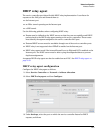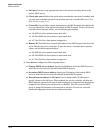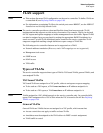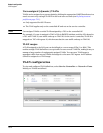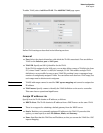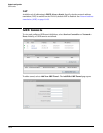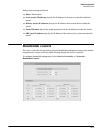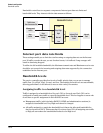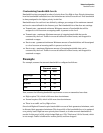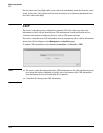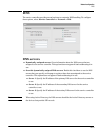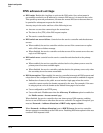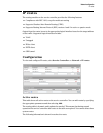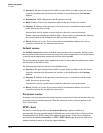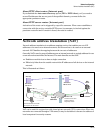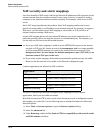
Network configuration
Bandwidth control
Customizing bandwidth levels
Bandwidth levels are arranged in order of priority from Very High to Low. Priority determines
how free bandwidth is allocated once the minimum rate is met for each level. Free bandwidth
is always assigned to the higher priority levels first.
Bandwidth rates for each level are defined by taking a percentage of the maximum transmit
and receive rates defined for the Internet port. Each bandwidth level has four rate settings:
Transmit rate - guaranteed minimum: Minimum amount of bandwidth that will be
assigned to a level as soon as outgoing traffic is present on the level.
Transmit rate - maximum: Maximum amount of outgoing bandwidth that can be
consumed by the level. Traffic in excess is buffered for short bursts, and dropped for
sustained overages.
Receive rate - guaranteed minimum: Minimum amount of bandwidth that will be assigned
to a level as soon as incoming traffic is present on the level.
Receive rate - maximum: Maximum amount of incoming bandwidth that can be
consumed by the level. Traffic in excess is buffered for short bursts, and dropped for
sustained overages.
Example
For example, assume that transmit bandwidth is configured as follows:
Transmit rates
Min Max
Very High
20 20
High
40 100
Normal
20 100
Low
20 20
Next, assume the following bandwidth requirement occurs on transmitted user data:
High requires 70%, which is 30% more than its minimum.
Normal requires 50%, which is 30% more than its minimum.
There is no traffic on Very High or Low.
Since both High and Normal require bandwidth in excess of their guaranteed minimum, each
is allocated their guaranteed minimum. This leaves 40% of the bandwidth free to be assigned
on a priority basis. High has more priority than Normal, so it takes as much bandwidth as
needed. In this case it is 30%, which brings High up to 70%. This leaves 10% for Normal, which
is not enough. Traffic is buffered for a short period, and then dropped.
10-17



